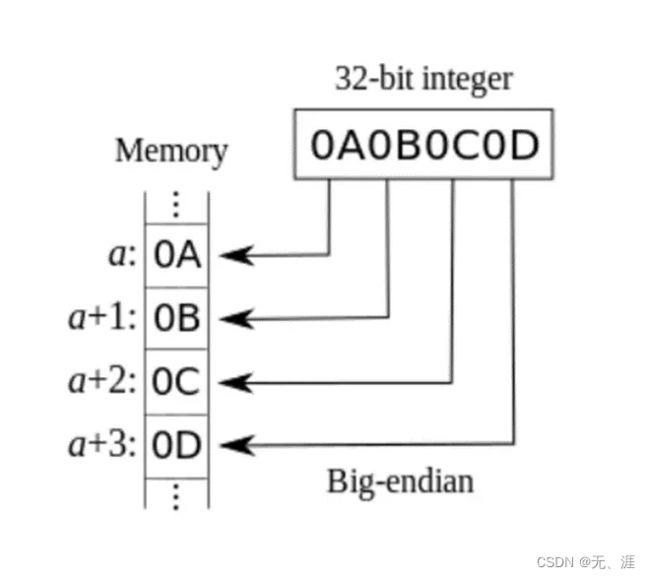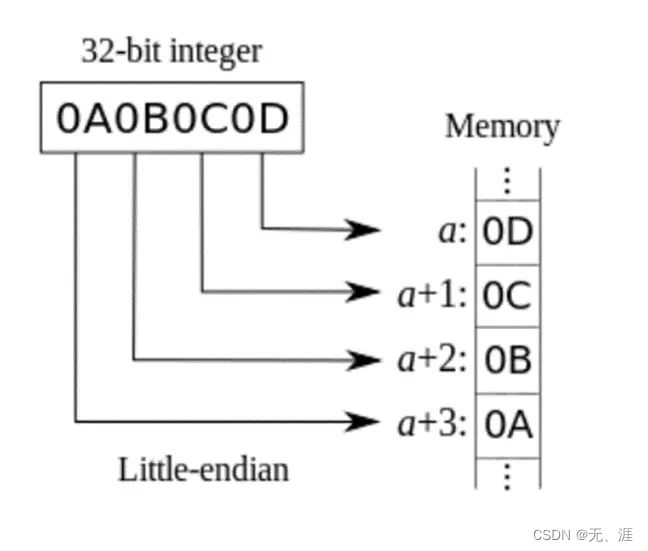- java spi 好处_Java SPI 实战
Gaven Wang
javaspi好处
SPI全称为(ServiceProviderInterface),是JDK内置的一种服务提供发现机制,可以轻松实现面向服务的注册与发现,完成服务提供与使用的解耦,并且可以实现动态加载SPI能做什么利用SPI机制,sdk的开发者可以为使用者提供扩展点,使用者无需修改源码,有点类似Spring@ConditionalOnMissingBean的意思动手实现一个SPI例如我们要正在开发一个sdk其中有一
- Java中的批处理优化:使用Spring Batch处理大规模数据的实践
微赚淘客系统开发者@聚娃科技
javaspringbatch
Java中的批处理优化:使用SpringBatch处理大规模数据的实践大家好,我是微赚淘客返利系统3.0的小编,是个冬天不穿秋裤,天冷也要风度的程序猿!在处理大规模数据的场景中,批处理是一个非常常见且必要的操作。Java中的SpringBatch是一个强大的框架,能够帮助我们高效地执行复杂的批处理任务。本文将带大家了解如何使用SpringBatch处理大规模数据,并通过代码示例展示如何实现高效的批
- js递归性能优化
啃火龙果的兔子
开发DEMOjavascript开发语言ecmascript
JavaScript递归性能优化递归是编程中强大的技术,但在JavaScript中如果不注意优化可能会导致性能问题甚至栈溢出。以下是几种优化递归性能的方法:1.尾调用优化(TailCallOptimization,TCO)ES6引入了尾调用优化,但只在严格模式下有效:'usestrict';//普通递归functionfactorial(n){if(n===1)return1;returnn*fa
- 2025 VUE常见面试题
hmildj
vue.js面试前端
前言总结一些VUE面试的基础知识,共同学习1.什么是Vue?答案:Vue.js(通常简称为Vue)是一个用于构建用户界面的渐进式JavaScript框架,Vue3是Vue.js框架的最新版本,它引入了许多改进和优化,包括性能提升、更好的类型支持、组合API等。2.MVVM模式是什么?Vue如何体现这一模式?答案:MVVM将视图(View)与数据(Model)通过ViewModel层解耦,Vue
- Java静态static详解
Obltv
Java基础java
更多内容请看我的个人网站date:2025-06-04tags:八股基础静态变量特点被该类的所有对象共享不属于对象,属于类优先于对象存在,随着类的加载而加载调用方式类名调用对象名调用(不推荐)静态方法没有this关键字publicclassStudent{privateStringname;privateintage;privateStringteacherName;publicvoidshow(
- Java中多态的一些见解
更多内容请看我的个人网站多态初识调用成员的特点成员变量:编译看左边,运行看左边成员方法:编译看左边,运行看右边多态在调用成员变量时为什么是父类的,但是方法是子类的?一句话解释:在编译时(静态绑定),成员变量是根据引用类型(也就是声明的类型)来决定的;在运行时(动态绑定),方法是根据对象的实际类型(也就是new出来的类型)来决定的。举个经典例子classParent{publicStringname
- Java中的值传递
Obltv
Java基础java开发语言
更多内容请看我的个人网站date:2025-06-01tags:八股基础Java中只有值传递什么是值传递值传递(PassbyValue)调用方法时,传递的是参数的值,是原始数据的一个副本。方法内部改变这个副本,不影响原始数据。什么是引用传递引用传递(PassbyReference)调用方法时,传递的是变量的地址(指针),方法内部对这个引用的任何更改,都会影响原始对象的引用。举例一个方法不能修改一个
- 代码随想录算法训练营第52天 | 101.孤岛的总面积 、102.沉没孤岛、103.水流问题、104.建造最大岛屿
Amor_Fati_Yu
算法java数据结构
101.孤岛的总面积importjava.util.*;publicclassMain{privatestaticintcount=0;privatestaticfinalint[][]dir={{0,1},{1,0},{-1,0},{0,-1}};//四个方向privatestaticvoidbfs(int[][]grid,intx,inty){Queueque=newLinkedList=gr
- 将字符串数组String[]转换成List的三种方法
积极向上的Elbert
java学习java开发语言
通过Arrays.asList(strArray)方式,将数组转换List后,不能对List增删,只能查改,否则抛异常。String[]strArray=newString[2];Listlist=Arrays.asList(strArray);list.add("1");//此处会报错原因解析:Arrays.asList(strArray)返回值是java.util.Arrays类中一个私有静态
- Java Fork/Join 框架详解
empti_
数据结构与算法java
JavaFork/Join框架详解Fork/Join框架是Java7引入的一个并行编程框架,专门设计用来高效地实现分治算法(Divide-and-Conquer)。它通过工作窃取(Work-Stealing)算法来最大化多核处理器的利用率。一、核心概念1.基本组成ForkJoinPool:特殊的线程池,管理工作线程ForkJoinTask:表示任务的抽象类,有两个重要子类:RecursiveAct
- Java注解的实现原理
empti_
Java基础java
Java注解的实现原理Java注解的实现涉及Java语言规范、编译器处理和JVM支持等多个层面。下面我将详细解释注解在Java中的实现机制。一、注解的本质注解本质上是一种特殊的接口,所有注解类型都隐式继承自java.lang.annotation.Annotation接口。当你定义一个注解时:public@interfaceMyAnnotation{Stringvalue();}编译器实际上会生成
- 并行归并排序的 Java 实现
empti_
数据结构与算法java算法排序算法
并行归并排序Java实现importjava.util.concurrent.RecursiveAction;importjava.util.concurrent.ForkJoinPool;publicclassParallelMergeSort{//主方法,供外部调用publicstaticvoidparallelMergeSort(int[]array){ForkJoinPoolpool=ne
- Spring Boot项目初始化加载自定义配置文件内容到静态属性字段
@Corgi
Java面试题springboot后端java
文章目录创建配置文件cXXX.properties配置类XXXConfig.java添加第三方JAR包创建配置文件cXXX.properties在resource目录下新建配置文件cXXX.properties,内容如下:#商户号mch_id=xxxxx#商户密码pwd=xxxx#接口请求地址req_url=https://xxx#异步回调通知地址(请替换为实际地址)notify_url=htt
- Nginx与Tomcat:谁更适合你的服务器?
当归1024
java中间件nginxnginxtomcat服务器
nginx和Tomcat是两种不同类型的服务器软件,它们各有不同的用途和特点:基本定义nginx轻量级的HTTP服务器和反向代理服务器主要用于静态文件服务、负载均衡、反向代理TomcatJavaWeb应用服务器专门用于运行JavaWeb应用(JSP、Servlet)主要区别1.功能定位nginx:静态文件服务器反向代理服务器负载均衡器HTTP缓存服务器Tomcat:Java应用容器JSP/Serv
- Spring AI Alibaba 支持国产大模型的Spring ai框架
程序员老陈头
面试学习路线阿里巴巴spring人工智能java
总计30万奖金,SpringAIAlibaba应用框架挑战赛开赛点此了解SpringAI:java做ai应用的最好选择过去,Java在AI应用开发方面缺乏一个高效且易于集成的框架,这限制了开发者快速构建和部署智能应用程序的能力。SpringAI正是为解决这一问题而生,它提供了一套统一的接口,使得AI功能能够以一种标准化的方式被集成到现有的Java项目中。此外,SpringAI与原有的Spring生
- Node.js 全局对象
froginwe11
开发语言
Node.js全局对象引言Node.js作为一种流行的JavaScript运行环境,以其高性能、轻量级和跨平台的特点,被广泛应用于服务器端编程、网络应用开发等领域。在Node.js中,全局对象是一个重要的概念,它为开发者提供了一系列内置的全局变量和方法,使得编程变得更加便捷。本文将详细介绍Node.js的全局对象,帮助开发者更好地理解和运用它们。Node.js全局对象概述Node.js的全局对象指
- 企业级AI开发利器:Spring AI框架深度解析与实战_spring ai实战
AI大模型-海文
人工智能springpython算法开发语言java机器学习
企业级AI开发利器:SpringAI框架深度解析与实战一、前言:Java生态的AI新纪元在人工智能技术爆发式发展的今天,Java开发者面临着一个新的挑战:如何将大语言模型(LLMs)和生成式AI(GenAI)无缝融入企业级应用。传统的Java生态缺乏统一的AI集成方案,开发者往往需要为不同AI供应商(如OpenAI、阿里云、HuggingFace)编写大量重复的接口适配代码,这不仅增加了开发成本,
- 009 【入门】单双链表及其反转-堆栈诠释
要天天开心啊
算法专栏算法链表
链表与堆栈系统详解|[数据结构]-[中级]-[通用]一、基础概念与内存模型1.按值传递vs按引用传递|[Java]-[基础]-[内存]//[典型错误示例]-Java中的引用传递陷阱voidmodify(Nodenode){node=node.next;//[警告]错误!仅修改局部引用的指向,不影响原始链表}//[正确做法]-通过引用修改对象内部状态voidrealModify(Nodenode){
- 深度解析JavaScript 闭包
coding随想
JavaScriptjavascript开发语言ecmascript
深度解析JavaScript闭包引言:为什么闭包让人又爱又怕?在JavaScript的学习过程中,闭包(Closure)是一个绕不开的“坎”。很多开发者第一次接触闭包时,会感到一头雾水:“为什么函数能记住外部作用域的变量?”、“为什么闭包会导致内存泄漏?”。但另一方面,闭包又是JavaScript最强大的特性之一,它支撑着模块化开发、数据封装、异步编程等核心场景。本文将通过通俗的语言和生动的案例,
- JavaScript中的函数柯里化(Currying):从概念到实战
coding随想
JavaScriptjavascriptecmascript开发语言前端
JavaScript中的函数柯里化(Currying):从概念到实战在JavaScript开发中,函数式编程(FunctionalProgramming)逐渐成为一种主流思想。而函数柯里化(Currying),正是这一思想中的核心技巧之一。它不仅能提升代码的复用性和灵活性,还能帮助我们构建更优雅、更模块化的解决方案。本文将带你从零开始,深入理解柯里化的原理、实现方式及实际应用场景。一、什么是函数柯
- webpack和vite区别
PromptOnce
webpack前端node.js
一、Webpack1.概述Webpack是一个模块打包工具,它会递归地构建依赖关系图,并将所有模块打包成一个或多个bundle(包)。2.特点配置灵活:Webpack提供了高度可定制的配置文件,可以根据项目需求进行各种优化。生态系统丰富:Webpack拥有庞大的插件和加载器生态系统,可以处理各种资源类型(JavaScript、CSS、图片等)。支持代码拆分:通过代码拆分和懒加载,Webpack可以
- javascript 动态画心加文字
das白
#javascriptjavascript动态心型线文字
测试//铺满屏幕varwidth=document.documentElement.clientWidth;varheight=document.documentElement.clientHeight;document.getElementById("gycanvas").setAttribute("width",width);document.getElementById("gycanvas"
- javascript 动态画心
das白
#javascriptjavascript动态心型线
测试canvas{background:lawngreen;//画布背景色}//铺满屏幕varwidth=document.documentElement.clientWidth;varheight=document.documentElement.clientHeight;document.getElementById("gycanvas").setAttribute("width",width
- javascript 画心型线
测试canvas{background:lawngreen;//画布背景色}//铺满屏幕varwidth=document.documentElement.clientWidth;varheight=document.documentElement.clientHeight;document.getElementById("gycanvas").setAttribute("width",width
- 掌握Web3开发:从入门到精通
夲奋亻Jay
Web3web3
掌握Web3开发是一个涉及多个步骤和学习阶段的过程。以下是一些关键的步骤和开发案例,以及它们在搜索结果中的索引编号:了解区块链基础:学习区块链的基本概念,如去中心化、加密技术、共识机制等[1]。学习智能合约:学习智能合约的工作原理和它们在区块链上的应用,特别是以太坊平台上的智能合约[1]。掌握Web3.js或Ethers.js:学习如何使用这些JavaScript库与智能合约交互、发送交易和监听事
- JavaScript性能优化
lyh1344
javascript性能优化开发语言
JavaScript性能优化方法减少重绘和回流频繁操作DOM会导致浏览器反复计算布局,引发性能问题。使用documentFragment进行批量DOM操作,或通过classList一次性修改多个样式属性。缓存DOM查询结果,避免重复访问。事件委托利用事件冒泡机制,将事件监听器绑定到父元素而非多个子元素。减少内存占用,提升动态内容的事件处理效率。节流与防抖高频事件(如滚动、输入)通过节流(Throt
- 将图片的base64编码直接嵌入到html文件的css中
Kuo-Teng
软件开发实战htmlcssjavascript
将图片的base64编码直接嵌入到html文件的css中1.背景2.将图片进行base64编码3.将图片的base64编码写入到css1.背景如果你需要在html中引入一张外部图片,你可能会这样做:如果你将引用的图片保存到本地,你可能会这样做:但是,如果网络延迟较高,或者在jar包中运行Java项目时无法根据路径顺利找到图片呢?那么,将图片的base64编码直接写入html文件便是最好的选择!2.
- 什么是Node.js,有什么特点
前端与小赵
node.js
Node.js简介Node.js是一个基于ChromeV8引擎的JavaScript运行时环境,由RyanDahl于2009年创建。Node.js允许开发者使用JavaScript编写服务器端应用程序,打破了JavaScript仅限于浏览器端的限制。Node.js的设计目标是提供一种简单、高效的方式来构建可伸缩的网络应用。Node.js的特点非阻塞I/O特点:Node.js使用事件驱动的非阻塞I/
- Node.js到底是什么
浪裡遊
杂文node.jsphp开发语言前端javascriptvue.js
我想像是npm、vite这些名词大家都很熟悉,对它们的作用也有大致印象,但是可能都像我一样不明白Node.js到底是什么,这里给大家带来一个简单介绍。Node.js详解:历史发展、生态构建与底层原理一、Node.js的起源与历史发展诞生背景2009年5月:Node.js由RyanDahl开发并首次发布。其核心目标是解决JavaScript仅限于浏览器端运行的局限性,通过ChromeV8引擎(Jav
- 【Html实现“心形日出”(附效果+源代码)】| JavaScript面试题:解释一下异步编程中的回调函数、Promise和Async/Await的概念。它们有什么区别?
追光者♂
html5css3心形日出前端特效JS面试题PromiseAsync/Await
风会带走你曾经存在过的证明。——虞姬作者主页:追光者♂个人简介:[1]计算机专业硕士研究生[2]2023年城市之星领跑者TOP1(哈尔滨)[3]2022年度博客之星人工智能领域TOP4[4]阿里云社区特邀专家博主[5]CSDN-人工智能领域优质创作者无限进步,一起追光!!!
- Dom
周华华
JavaScripthtml
<!DOCTYPE html PUBLIC "-//W3C//DTD XHTML 1.0 Transitional//EN" "http://www.w3.org/TR/xhtml1/DTD/xhtml1-transitional.dtd">
<html xmlns="http://www.w3.org/1999/xhtml&q
- 【Spark九十六】RDD API之combineByKey
bit1129
spark
1. combineByKey函数的运行机制
RDD提供了很多针对元素类型为(K,V)的API,这些API封装在PairRDDFunctions类中,通过Scala隐式转换使用。这些API实现上是借助于combineByKey实现的。combineByKey函数本身也是RDD开放给Spark开发人员使用的API之一
首先看一下combineByKey的方法说明:
- msyql设置密码报错:ERROR 1372 (HY000): 解决方法详解
daizj
mysql设置密码
MySql给用户设置权限同时指定访问密码时,会提示如下错误:
ERROR 1372 (HY000): Password hash should be a 41-digit hexadecimal number;
问题原因:你输入的密码是明文。不允许这么输入。
解决办法:用select password('你想输入的密码');查询出你的密码对应的字符串,
然后
- 路漫漫其修远兮 吾将上下而求索
周凡杨
学习 思索
王国维在他的《人间词话》中曾经概括了为学的三种境界古今之成大事业、大学问者,罔不经过三种之境界。“昨夜西风凋碧树。独上高楼,望尽天涯路。”此第一境界也。“衣带渐宽终不悔,为伊消得人憔悴。”此第二境界也。“众里寻他千百度,蓦然回首,那人却在灯火阑珊处。”此第三境界也。学习技术,这也是你必须经历的三种境界。第一层境界是说,学习的路是漫漫的,你必须做好充分的思想准备,如果半途而废还不如不要开始。这里,注
- Hadoop(二)对话单的操作
朱辉辉33
hadoop
Debug:
1、
A = LOAD '/user/hue/task.txt' USING PigStorage(' ')
AS (col1,col2,col3);
DUMP A;
//输出结果前几行示例:
(>ggsnPDPRecord(21),,)
(-->recordType(0),,)
(-->networkInitiation(1),,)
- web报表工具FineReport常用函数的用法总结(日期和时间函数)
老A不折腾
finereport报表工具web开发
web报表工具FineReport常用函数的用法总结(日期和时间函数)
说明:凡函数中以日期作为参数因子的,其中日期的形式都必须是yy/mm/dd。而且必须用英文环境下双引号(" ")引用。
DATE
DATE(year,month,day):返回一个表示某一特定日期的系列数。
Year:代表年,可为一到四位数。
Month:代表月份。
- c++ 宏定义中的##操作符
墙头上一根草
C++
#与##在宏定义中的--宏展开 #include <stdio.h> #define f(a,b) a##b #define g(a) #a #define h(a) g(a) int main() { &nbs
- 分析Spring源代码之,DI的实现
aijuans
springDI现源代码
(转)
分析Spring源代码之,DI的实现
2012/1/3 by tony
接着上次的讲,以下这个sample
[java]
view plain
copy
print
- for循环的进化
alxw4616
JavaScript
// for循环的进化
// 菜鸟
for (var i = 0; i < Things.length ; i++) {
// Things[i]
}
// 老鸟
for (var i = 0, len = Things.length; i < len; i++) {
// Things[i]
}
// 大师
for (var i = Things.le
- 网络编程Socket和ServerSocket简单的使用
百合不是茶
网络编程基础IP地址端口
网络编程;TCP/IP协议
网络:实现计算机之间的信息共享,数据资源的交换
协议:数据交换需要遵守的一种协议,按照约定的数据格式等写出去
端口:用于计算机之间的通信
每运行一个程序,系统会分配一个编号给该程序,作为和外界交换数据的唯一标识
0~65535
查看被使用的
- JDK1.5 生产消费者
bijian1013
javathread生产消费者java多线程
ArrayBlockingQueue:
一个由数组支持的有界阻塞队列。此队列按 FIFO(先进先出)原则对元素进行排序。队列的头部 是在队列中存在时间最长的元素。队列的尾部 是在队列中存在时间最短的元素。新元素插入到队列的尾部,队列检索操作则是从队列头部开始获得元素。
ArrayBlockingQueue的常用方法:
- JAVA版身份证获取性别、出生日期及年龄
bijian1013
java性别出生日期年龄
工作中需要根据身份证获取性别、出生日期及年龄,且要还要支持15位长度的身份证号码,网上搜索了一下,经过测试好像多少存在点问题,干脆自已写一个。
CertificateNo.java
package com.bijian.study;
import java.util.Calendar;
import
- 【Java范型六】范型与枚举
bit1129
java
首先,枚举类型的定义不能带有类型参数,所以,不能把枚举类型定义为范型枚举类,例如下面的枚举类定义是有编译错的
public enum EnumGenerics<T> { //编译错,提示枚举不能带有范型参数
OK, ERROR;
public <T> T get(T type) {
return null;
- 【Nginx五】Nginx常用日志格式含义
bit1129
nginx
1. log_format
1.1 log_format指令用于指定日志的格式,格式:
log_format name(格式名称) type(格式样式)
1.2 如下是一个常用的Nginx日志格式:
log_format main '[$time_local]|$request_time|$status|$body_bytes
- Lua 语言 15 分钟快速入门
ronin47
lua 基础
-
-
单行注释
-
-
[[
[多行注释]
-
-
]]
-
-
-
-
-
-
-
-
-
-
-
1.
变量 & 控制流
-
-
-
-
-
-
-
-
-
-
num
=
23
-
-
数字都是双精度
str
=
'aspythonstring'
- java-35.求一个矩阵中最大的二维矩阵 ( 元素和最大 )
bylijinnan
java
the idea is from:
http://blog.csdn.net/zhanxinhang/article/details/6731134
public class MaxSubMatrix {
/**see http://blog.csdn.net/zhanxinhang/article/details/6731134
* Q35
求一个矩阵中最大的二维
- mongoDB文档型数据库特点
开窍的石头
mongoDB文档型数据库特点
MongoDD: 文档型数据库存储的是Bson文档-->json的二进制
特点:内部是执行引擎是js解释器,把文档转成Bson结构,在查询时转换成js对象。
mongoDB传统型数据库对比
传统类型数据库:结构化数据,定好了表结构后每一个内容符合表结构的。也就是说每一行每一列的数据都是一样的
文档型数据库:不用定好数据结构,
- [毕业季节]欢迎广大毕业生加入JAVA程序员的行列
comsci
java
一年一度的毕业季来临了。。。。。。。。
正在投简历的学弟学妹们。。。如果觉得学校推荐的单位和公司不适合自己的兴趣和专业,可以考虑来我们软件行业,做一名职业程序员。。。
软件行业的开发工具中,对初学者最友好的就是JAVA语言了,网络上不仅仅有大量的
- PHP操作Excel – PHPExcel 基本用法详解
cuiyadll
PHPExcel
导出excel属性设置//Include classrequire_once('Classes/PHPExcel.php');require_once('Classes/PHPExcel/Writer/Excel2007.php');$objPHPExcel = new PHPExcel();//Set properties 设置文件属性$objPHPExcel->getProperties
- IBM Webshpere MQ Client User Issue (MCAUSER)
darrenzhu
IBMjmsuserMQMCAUSER
IBM MQ JMS Client去连接远端MQ Server的时候,需要提供User和Password吗?
答案是根据情况而定,取决于所定义的Channel里面的属性Message channel agent user identifier (MCAUSER)的设置。
http://stackoverflow.com/questions/20209429/how-mca-user-i
- 网线的接法
dcj3sjt126com
一、PC连HUB (直连线)A端:(标准568B):白橙,橙,白绿,蓝,白蓝,绿,白棕,棕。 B端:(标准568B):白橙,橙,白绿,蓝,白蓝,绿,白棕,棕。 二、PC连PC (交叉线)A端:(568A): 白绿,绿,白橙,蓝,白蓝,橙,白棕,棕; B端:(标准568B):白橙,橙,白绿,蓝,白蓝,绿,白棕,棕。 三、HUB连HUB&nb
- Vimium插件让键盘党像操作Vim一样操作Chrome
dcj3sjt126com
chromevim
什么是键盘党?
键盘党是指尽可能将所有电脑操作用键盘来完成,而不去动鼠标的人。鼠标应该说是新手们的最爱,很直观,指哪点哪,很听话!不过常常使用电脑的人,如果一直使用鼠标的话,手会发酸,因为操作鼠标的时候,手臂不是在一个自然的状态,臂肌会处于绷紧状态。而使用键盘则双手是放松状态,只有手指在动。而且尽量少的从鼠标移动到键盘来回操作,也省不少事。
在chrome里安装 vimium 插件
- MongoDB查询(2)——数组查询[六]
eksliang
mongodbMongoDB查询数组
MongoDB查询数组
转载请出自出处:http://eksliang.iteye.com/blog/2177292 一、概述
MongoDB查询数组与查询标量值是一样的,例如,有一个水果列表,如下所示:
> db.food.find()
{ "_id" : "001", "fruits" : [ "苹
- cordova读写文件(1)
gundumw100
JavaScriptCordova
使用cordova可以很方便的在手机sdcard中读写文件。
首先需要安装cordova插件:file
命令为:
cordova plugin add org.apache.cordova.file
然后就可以读写文件了,这里我先是写入一个文件,具体的JS代码为:
var datas=null;//datas need write
var directory=&
- HTML5 FormData 进行文件jquery ajax 上传 到又拍云
ileson
jqueryAjaxhtml5FormData
html5 新东西:FormData 可以提交二进制数据。
页面test.html
<!DOCTYPE>
<html>
<head>
<title> formdata file jquery ajax upload</title>
</head>
<body>
<
- swift appearanceWhenContainedIn:(version1.2 xcode6.4)
啸笑天
version
swift1.2中没有oc中对应的方法:
+ (instancetype)appearanceWhenContainedIn:(Class <UIAppearanceContainer>)ContainerClass, ... NS_REQUIRES_NIL_TERMINATION;
解决方法:
在swift项目中新建oc类如下:
#import &
- java实现SMTP邮件服务器
macroli
java编程
电子邮件传递可以由多种协议来实现。目前,在Internet 网上最流行的三种电子邮件协议是SMTP、POP3 和 IMAP,下面分别简单介绍。
◆ SMTP 协议
简单邮件传输协议(Simple Mail Transfer Protocol,SMTP)是一个运行在TCP/IP之上的协议,用它发送和接收电子邮件。SMTP 服务器在默认端口25上监听。SMTP客户使用一组简单的、基于文本的
- mongodb group by having where 查询sql
qiaolevip
每天进步一点点学习永无止境mongo纵观千象
SELECT cust_id,
SUM(price) as total
FROM orders
WHERE status = 'A'
GROUP BY cust_id
HAVING total > 250
db.orders.aggregate( [
{ $match: { status: 'A' } },
{
$group: {
- Struts2 Pojo(六)
Luob.
POJOstrust2
注意:附件中有完整案例
1.采用POJO对象的方法进行赋值和传值
2.web配置
<?xml version="1.0" encoding="UTF-8"?>
<web-app version="2.5"
xmlns="http://java.sun.com/xml/ns/javaee&q
- struts2步骤
wuai
struts
1、添加jar包
2、在web.xml中配置过滤器
<filter>
<filter-name>struts2</filter-name>
<filter-class>org.apache.st

